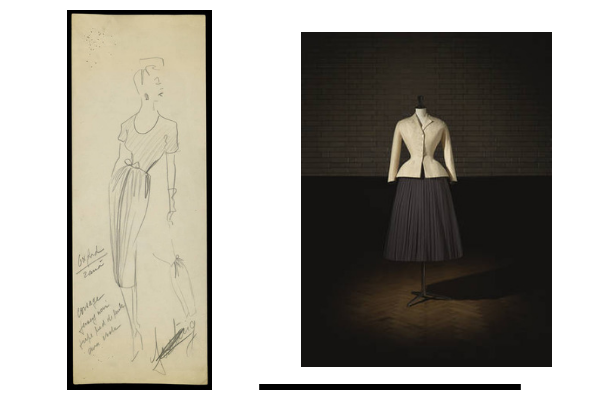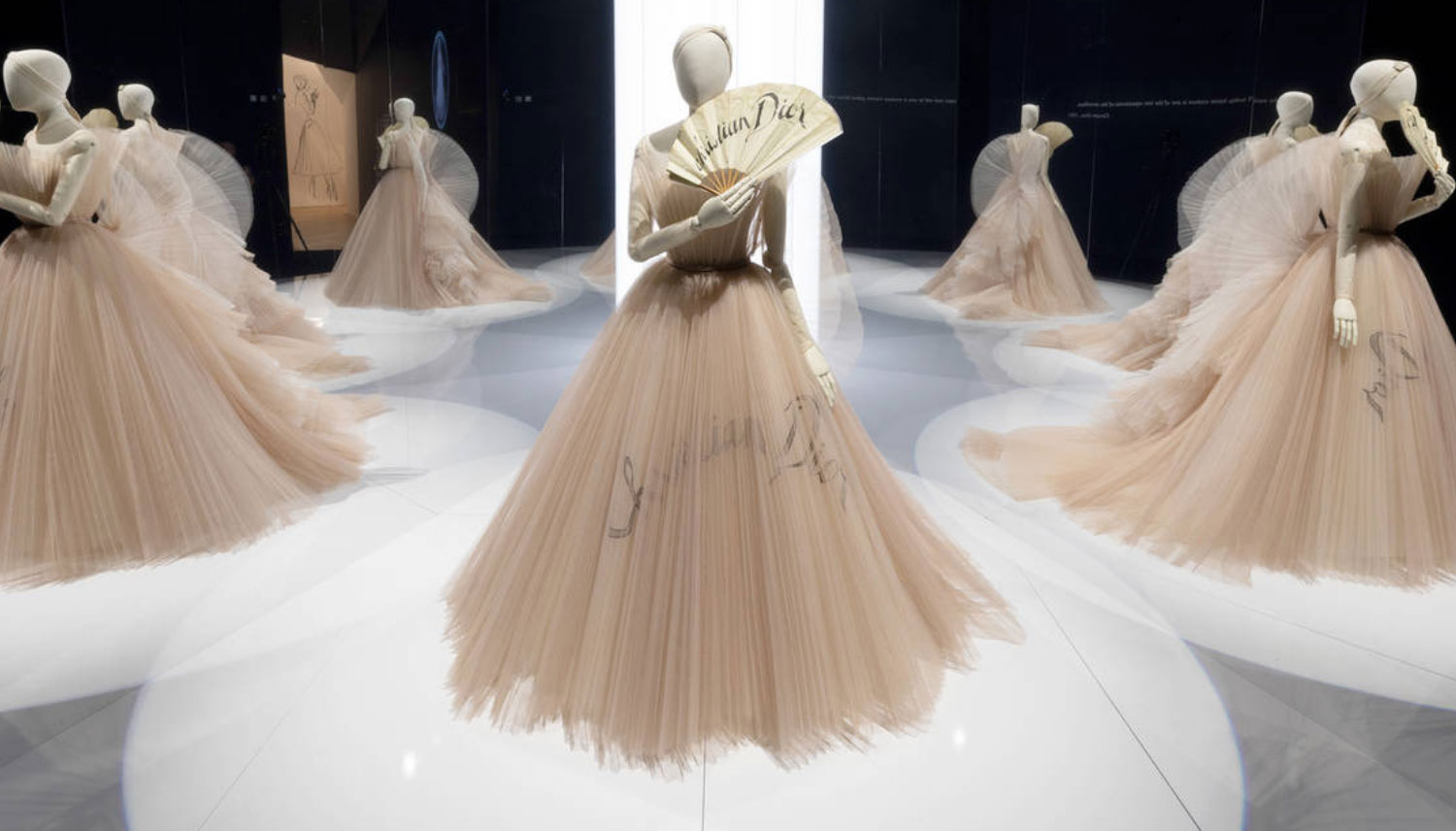FRENCH HAUTE COUTURE
WITH A BRITISH TWIST
Based on 2017’s Paris couture exhibition “Christian Dior: Couturier du Rêve” the exhibition has been reimagined for the V&A making it the largest, most in-depth look into the house of Dior ever staged in the UK. According to V&A curator Oriole Cullen, the exhibition “Christian Dior: Designer of Dreams” explores Dior’s special relationship with Britain, revealing the UK to have played a surprisingly large part in what could be considered the most “French” brand on earth.
Born in Normandy in 1905, Christian Dior was the son of a wealthy industrialist; it was his parents who bankrolled his first venture, a Paris gallery, even if they would not allow him to put the family name above the door. In 1931, however, his mother died and his father lost all his money, at which point the feeling that Christian’s artistic leanings were not quite the thing (they’d hoped for a diplomat) ceased to matter. Having retrained as a fashion illustrator, he worked as a designer, first for Robert Piguet and then for Lucien Lelong. Finally, in 1946, he established his own house at 30 Avenue Montaigne, with three ateliers and 85 employees. Ten years later, he had twenty-eight ateliers and a staff of 1,000, not to mention a perfume collection and a pale-faced assistant who went by the name of Yves St Laurent.
As is to be expected, the show charts the brand’s history from 1947 to the present day, celebrating the life and works of Christian Dior and his six subsequent successors to the helm of the house. The exhibition presents over 200 rare haute couture garments drawn from the V&A’s couture collection and the extensive Dior archives alongside fashion photography, film, accessories, vintage perfume, illustrations, magazines, and Christian Dior’s personal effects. Of course, taking such a deep look at one fashion house’s evolution, it also serves as a case study for the changing nature of the industry. By viewing the collections through the lens of a historian, audiences are able to clearly see exactly how different of a climate each creative director has been faced with.
A tour of the exhibit begins with Dior’s birth in 1905, leading to the introduction of the house. Scattered throughout one can see rare items of the designer’s personal possessions, like family photographs of Dior’s younger sister Catherine (the inspiration behind the famed Miss Dior perfume), a telegram announcing his death in 1957, and even the passports of the in-house models, littered with a stamp for every country within which Dior showed.

Left: Sketch by Christian Dior for model Oxford, Spring-Summer 1947 Haute Couture collection. © Christian Dior. Right: Christian Dior (1905–57), Bar Suit of silk and wool, Haute Couture, Spring/Summer 1947, Corolle Line. Victoria and Albert Museum, London. Photo © Laziz Hamani
Now, close your eyes and think of Dior. What comes to mind? Christian Dior never had a pet movie star, like Givenchy had Audrey Hepburn; nor a longstanding muse, as Catherine Deneuve was for Yves Saint Laurent. So the odds are, that you think first of all of the New Look suit. An ivory shantung jacket and a black wool skirt that has come to stand for Dior and beyond that as an emblem for fashion itself – the very idea of a must-have New Look. This suit, the Bar, is the first thing you see when you enter Christian Dior: Designer of Dreams.
The New Look was not just a trend, it was a vision of Paris reborn in a perilous postwar moment when it was not at all clear that French fashion would be able to reclaim its primacy. Dior became a national hero in France as a result. The cover of Time magazine on which he featured shortly before his death is displayed alongside the Bar suit.
A true modernist, he was decades ahead of his time in building a global brand, traveling to Venezuela, Japan and Australia as well as London and New York.
This is the first fashion exhibition to be staged in the V&A’s new Sainsbury Wing, and the Dior in Britain section gives the show a timely emphasis on the idea of Britishness, and presents Princess Margaret as Dior’s answer to Hepburn or Deneuve. Her status as a fashion icon has been boosted by gorgeous wardrobing in the Netflix series The Crown, presenting Dior with an opportune moment to lay claim to the real-life princess, who wore Dior for her 21st birthday party.
Subsequent sections are divided into Travel, Garden and Historicism to show the common themes of the house, as interpreted by each of Dior’s successors (Yves Saint Laurent, Marc Bohan, Gianfranco Ferre, John Galliano, Raf Simons, and Maria Grazia Chiuri). The garden room is particularly notable for its design: hanging paper wisteria and roses, reminiscent of Simons’s inaugural Fall 2012 couture show, immortalized in the documentary “Dior and I”.
The true show-stopper of the exhibit is the final section: The Ballroom. In a nod to Dior’s Avenue Montaigne headquarters, white wood-paneling whisks us to Paris, in a swirling, glittering setting. Twinkling lights are projected across the floor, walls, and ceilings to give a 360-degree experience transforming the room from day to night in a matter of minutes. It’s a fitting showcase for a brand that’s the living embodiment of ballgowns, and here they are given a truly glamorous stage.
Today’s creative director Maria Grazia Chiuri wanted to align Dior with modern feminism, and it is Marc Bohan, one of the lesser-known Dior designers, with whom she feels the most affinity. “His work was so contemporary. He had a quote that I love – ‘N’oubliez la femme’ – ‘Don’t forget the woman.’ For me, it’s impossible to forget the woman – I am the woman,” she says. She is “surprised every day,” that she is at Dior and at the V&A, she says, “but still, I want more. It is not just about me, as a woman. I want this brand to be about women, and I want this brand to care about women.”
CREDITS
Photos:
Courtesy of Victoria & Albert

